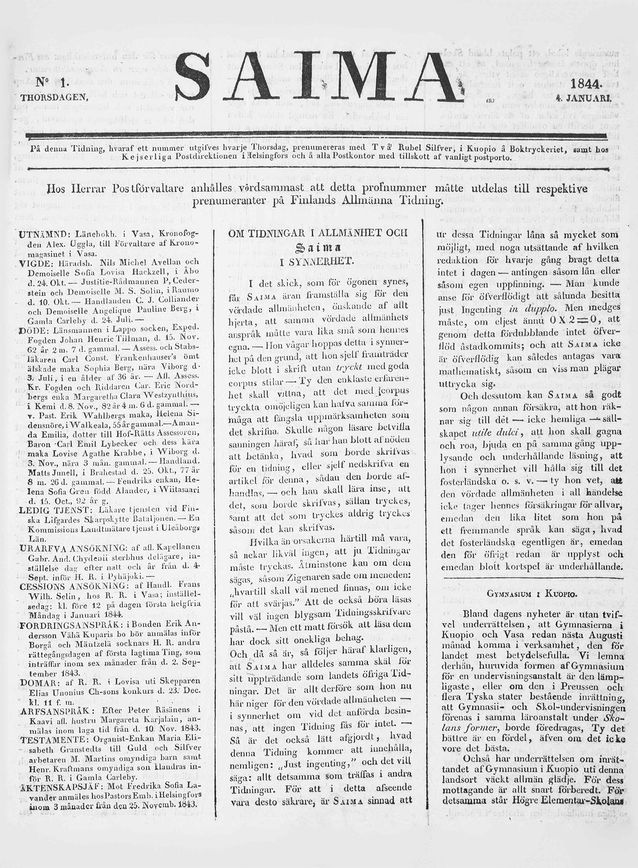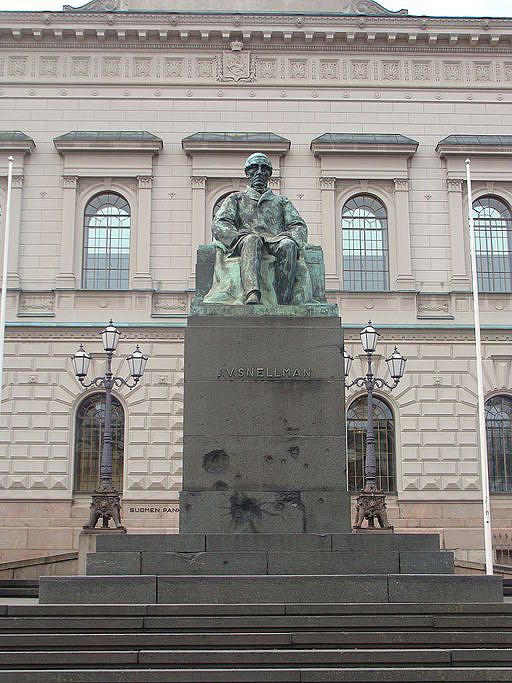Johan Vilhelm Snellman
Born May 12, 1806, Stockholm. Died July 4, 1881, Kirkkonummi.
Bachelor of Philosophy, 1831, Master of Philosophy, Imperial Alexander Institute
Professor of Moral Philosophy and Epistemology, 1856-60, Professor of Philosophy, 1860-3, Imperial Alexander University
Rector, Kuopio Senior School, 1843-9
Docent of Philosophy, Imperial Alexander University, 1835-39
Reporter, Saima newspaper, 1844-6, Maamiehen ystävä (‘Countryman’s companion’) newspaper, 1844-56, Litteraturblad journal, 1847-63
Senator, 1863-8
Parliamentary Representative, 1867, 1872, 1877-8
Honours
Ennobled, 1866
Knight of the Order of St Vladimir, third class, 1865
Honorary Doctorate, Imperial Alexander University, 1861
Chancellery Counsellor, 1859
Various public monuments around Finland
Named after Snellman
Anniversary, Suomalaisuuden päivä (‘Finnish Day’) May 12th
Largest denomination banknote, 1940-86, Commemorative coin, 2006
Snellman Institute, Kuopio, 1983
J.V. Snellman Home Museum, Kuopio, 1981
Streets and squares, incl. Helsinki, Kokkola, Kuopio, Lappeenranta, Mikkeli, Oulu, Äänekoski
Snellman University, Helsinki, 1980
Snellman schools in Turku, Kuopio and Helsinki
Commemorative postage stamp, 1956, 2006
Collected works (in Finnish)
Photo: Helsingin yliopistomuseo
Written by Juha Himanka and Tomas Sjöblom
Translated by John Calton


